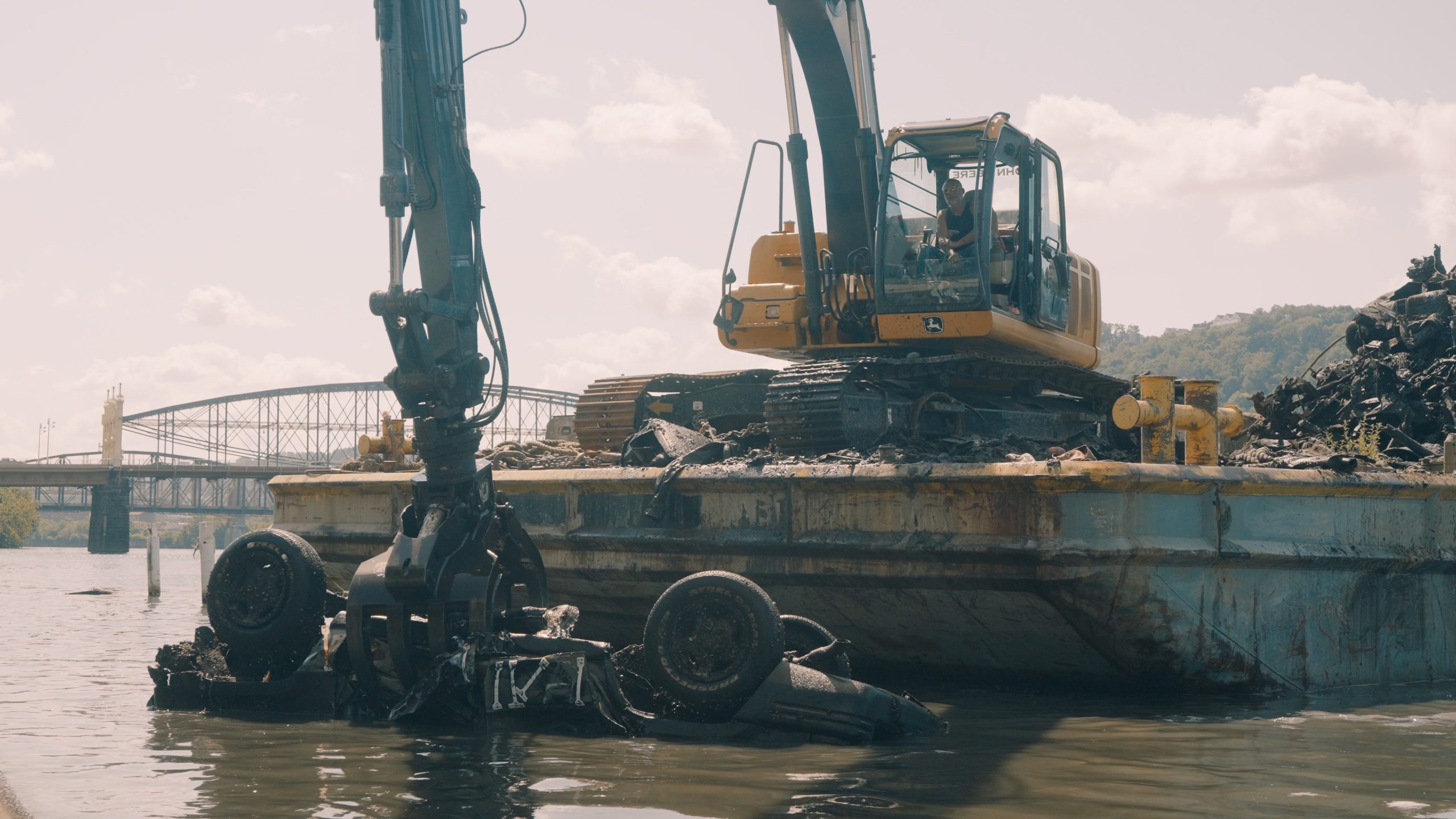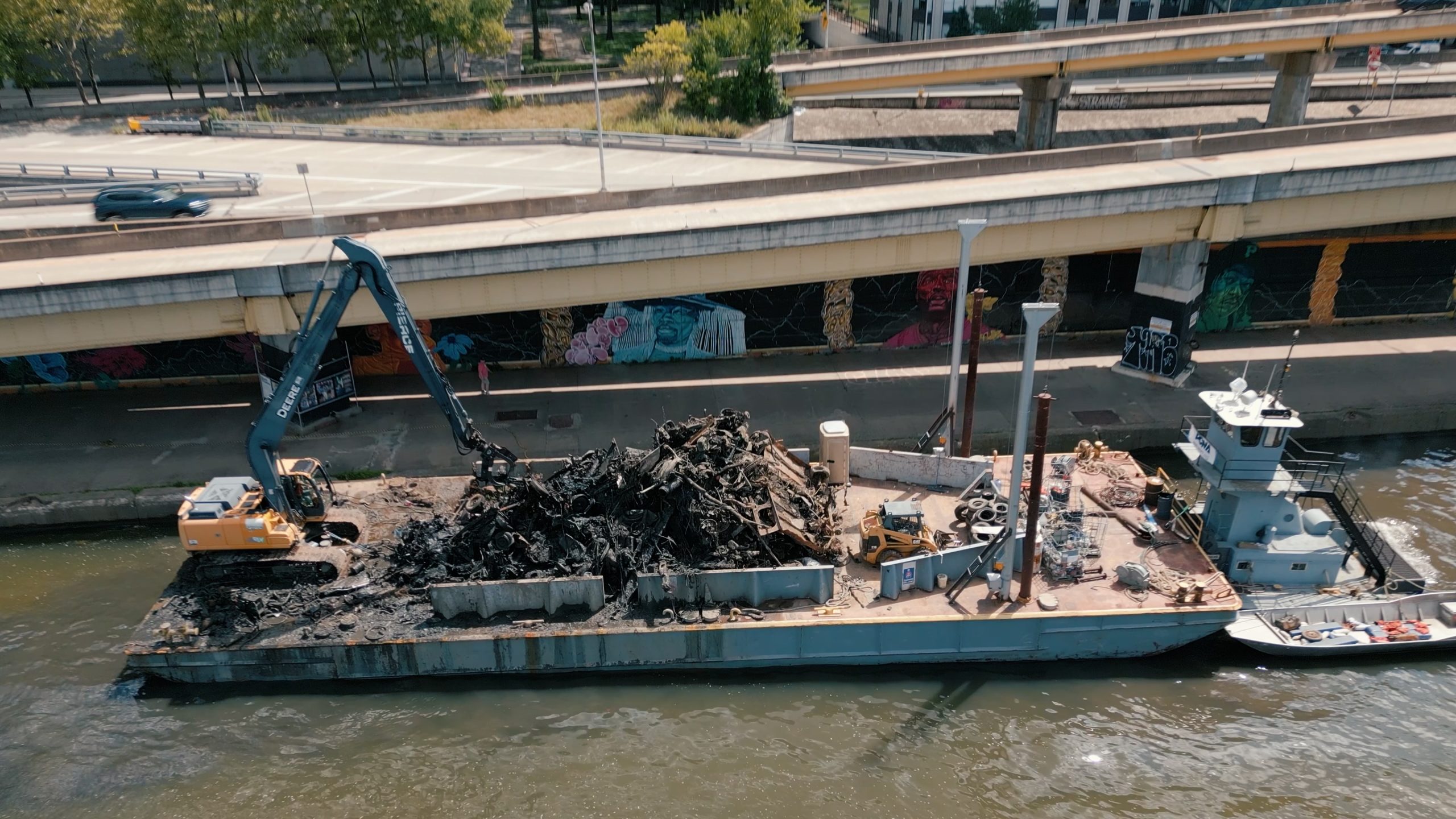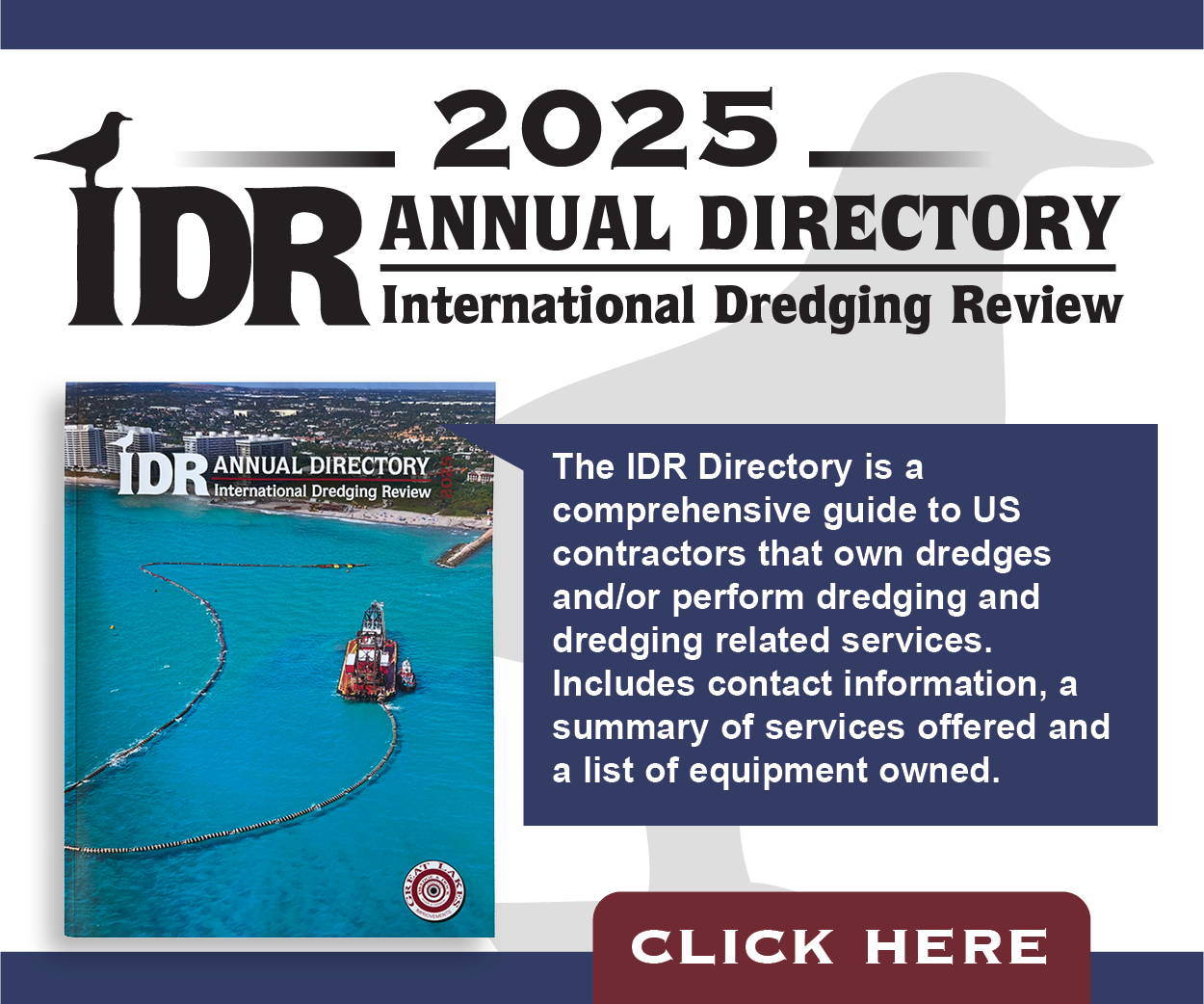The sight along the Pittsburgh riverfront in August was anything but pretty. In just two-and-a-half days, Living Lands & Waters (LL&W) removed an estimated 52 vehicles from the Monongahela and Allegheny rivers with a single excavator crane, barge and towboat.
The initiative began after the 2021 tornadoes in Cambridge Shores, Ky., when Living Lands & Waters arrived to help the community with disaster relief cleanup. After the LL&W team removed 1.2 million pounds of wreckage from the shoreline, the organization turned its attention to what was underwater. Dive teams from Cincinnati, Lake of the Ozarks and Marshall County teamed up with LL&W during relief efforts, where they alerted LL&W about the situation in Pennsylvania.
“They had been looking for a specific car,” said Callie Schaser, the communications specialist at Living Lands & Waters, “and in doing that they found about 20 other cars under the water on the shorelines.”
While LL&W had recovered vehicles before, it had never done so on this scale. The organization’s mission is cleaning garbage and debris from the rivers of the United States, with projects cleaning up hundreds of pounds of plastic, tires and appliances each year from shorelines and riverbeds. Most of the vehicles at the bottom of the Monongahela and Allegheny rivers are estimated to have been there since the 1950s, and a lack of funding left them stranded. Decades later, Living Lands & Waters began pulling them out. In just two and a half days, LL&W retrieved more than 120,000 pounds of wreckage, along with other garbage.
“We probably got about 40 to 50 cars on the Allegheny, and then another 12 to 13 or so on the Monongahela,” Schaser said. “It’s hard to say because sometimes we got whole cars, and sometimes we were taking parts of them. It wasn’t like the dive event we did in Cincinnati or the cars that we got in Louisville that hadn’t been there for so long. These cars were much different. They had been there for a very long time. There were cars down there from the ’50s and ’60s.You’d pull some parts out, and you’d say, oh my gosh, that’s an old Volkswagen Bug.”
PCNA (Polyconcept North America Inc.) sponsored the cleanup, and the Hamilton County Police Association (HCPA) Dive and Recovery Team and Pittsburgh River Rescue helped locate the cars. Sonar scans completed by the HCPA dive team revealed an area particularly congested with sunken vehicles.

“There were football fields full of cars on top of cars on top of cars that had been there for decades,” Schaser said.
While the goal for the Monongahela and Allegheny rivers was to remove cars, other debris was removed as well. Sunken boats and dock parts were among some of the recovered materials.
“While we had the equipment there, we were knocking out as much as we could,” Schaser said.
All the vehicles recovered were scanned and searched before retrieval for evidence of missing people or other crimes with the help of Pittsburgh River Rescue. Fortunately, none of the cars were flagged. While it’s uncertain how so many cars ended up in the rivers, the surprising number of cars in the Allegheny was thanks to a now-demolished open parking garage.
“When that area was a parking lot, it had no railings, and when it would flood or storm or water levels would come up, it would drag all those cars in there,” Schaser said.
Pulling out these vehicles from the rivers didn’t just mean pulling out metal scrap. Batteries, engine oil and other toxic chemicals were removed as well, elevating the quality of the river water and the health and safety of local wildlife. The Pittsburgh community was also incredibly grateful, even though the smell wasn’t particularly pleasant.
“People were walking by on their lunch break and stopped to watch,” Schaser said. “Fishermen were coming up and were happy to see things taken out because they would get snagged on [debris] all the time. The river down here is utilized recreationally. The stadium is right by the river. People are constantly in the house boats hanging out. I think a lot of people were happy to see things getting pulled out to make it cleaner and safer to use. Now people are going to see this stuff we removed, they may be more apt to go and check out the water and get in the water, buy a boat, whatever it would be. It seems like such a cool river community.”
Very little of what Living Lands & Waters recovers goes into a landfill. A large portion of the recovered material gets recycled or scrapped, providing further funding for the nonprofit. Still more cars lie at the bottom of the Monongahela, Allegheny and Ohio rivers, and LL&W hopes to return for further cleanups in the future.




